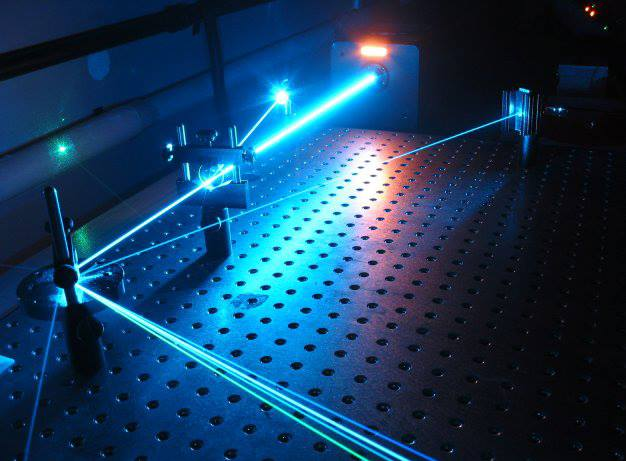Introduction of photoelectric testing technology
Photoelectric detection technology is one of the main technologies of photoelectric information technology, which mainly includes photoelectric conversion technology, optical information acquisition and optical information measurement technology and photoelectric processing technology of measurement information. Such as the photoelectric method to achieve a variety of physical measurement, low light, low light measurement, infrared measurement, light scanning, light tracking measurement, laser measurement, optical fiber measurement, image measurement.

Photoelectric detection technology combines optical technology and electronic technology to measure various quantities, which has the following characteristics:
1. High precision. The accuracy of photoelectric measurement is the highest among all kinds of measurement techniques. For example, the accuracy of measuring length with laser interferometry can reach 0.05μm/m; The Angle measurement by grating moire fringe method can be achieved. The resolution of measuring the distance between the earth and the moon by laser ranging method can reach 1m.
2. High speed. Photoelectric measurement takes light as the medium, and light is the fastest propagating speed among all kinds of substances, and it is undoubtedly the fastest to obtain and transmit information by optical methods.
3. Long distance, large range. Light is the most convenient medium for remote control and telemetry, such as weapon guidance, photoelectric tracking, television telemetry and so on.
4. Non-contact measurement. The light on the measured object can be considered to be no measurement force, so there is no friction, dynamic measurement can be achieved, and it is the most efficient of various measurement methods.
5. Long life. In theory, light waves are never worn, as long as the reproducibility is done well, it can be used forever.
6. With strong information processing and computing capabilities, complex information can be processed in parallel. The photoelectric method is also easy to control and store information, easy to realize automation, easy to connect with the computer, and easy to realize only.
Photoelectric testing technology is an indispensable new technology in modern science, national modernization and people’s life, is a new technology combining machine, light, electricity and computer, and is one of the most potential information technologies.
Third, the composition and characteristics of photoelectric detection system
Because of the complexity and diversity of the tested objects, the structure of the detection system is not the same. General electronic detection system is composed of three parts: sensor, signal conditioner and output link.
The sensor is a signal converter at the interface between the tested object and the detection system. It directly extracts the measured information from the measured object, senses its change, and converts it into electrical parameters that are easy to measure.
The signals detected by sensors are generally electrical signals. It can not directly meet the requirements of the output, need further transformation, processing and analysis, that is, through the signal conditioning circuit to convert it into a standard electrical signal, output to the output link.
According to the purpose and form of the output of the detection system, the output link is mainly display and recording device, data communication interface and control device.
The signal conditioning circuit of the sensor is determined by the type of sensor and the requirements for the output signal. Different sensors have different output signals. The output of the energy control sensor is the change of electrical parameters, which needs to be converted into a voltage change by a bridge circuit, and the voltage signal output of the bridge circuit is small, and the common mode voltage is large, which needs to be amplified by an instrument amplifier. The voltage and current signals output by the energy conversion sensor generally contain large noise signals. A filter circuit is needed to extract useful signals and filter out useless noise signals. Moreover, the amplitude of the voltage signal output by the general energy sensor is very low, and it may be amplified by an instrument amplifier.
Compared with the electronic system carrier, the frequency of the photoelectric system carrier is increased by several orders of magnitude. This change in the frequency order makes the photoelectric system have a qualitative change in the realization method and a qualitative leap in the function. Mainly manifested in the carrier capacity, angular resolution, range resolution and spectral resolution are greatly improved, so it is widely used in the fields of channel, radar, communication, precision guidance, navigation, measurement and so on. Although the specific forms of the photoelectric system applied to these occasions are different, they have a common feature, that is, they all have the link of transmitter, optical channel and optical receiver.
Photoelectric systems are usually divided into two categories: active and passive. In the active photoelectric system, the optical transmitter is mainly composed of a light source (such as a laser) and a modulator. In a passive photoelectric system, the optical transmitter emits thermal radiation from the object under test. Optical channels and optical receivers are identical for both. The so-called optical channel mainly refers to the atmosphere, space, underwater and optical fiber. The optical receiver is used to collect the incident optical signal and process it to recover the information of the optical carrier, including three basic modules.
Photoelectric conversion is usually achieved through a variety of optical components and optical systems, using flat mirrors, optical slits, lenses, cone prisms, polarizers, wave plates, code plates, grating, modulators, optical imaging systems, optical interference systems, etc., to achieve the measured conversion into optical parameters (amplitude, frequency, phase, polarization state, propagation direction changes, etc.). Photoelectric conversion is accomplished by various photoelectric conversion devices, such as photoelectric detection devices, photoelectric camera devices, photoelectric thermal devices and so on.
Post time: Jul-20-2023





